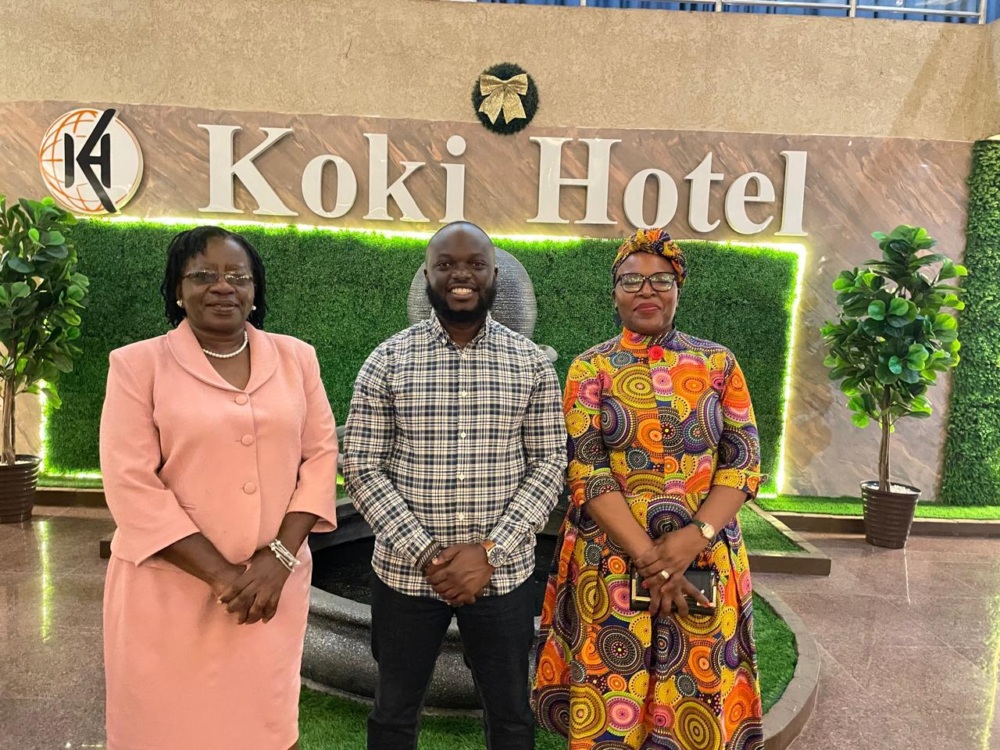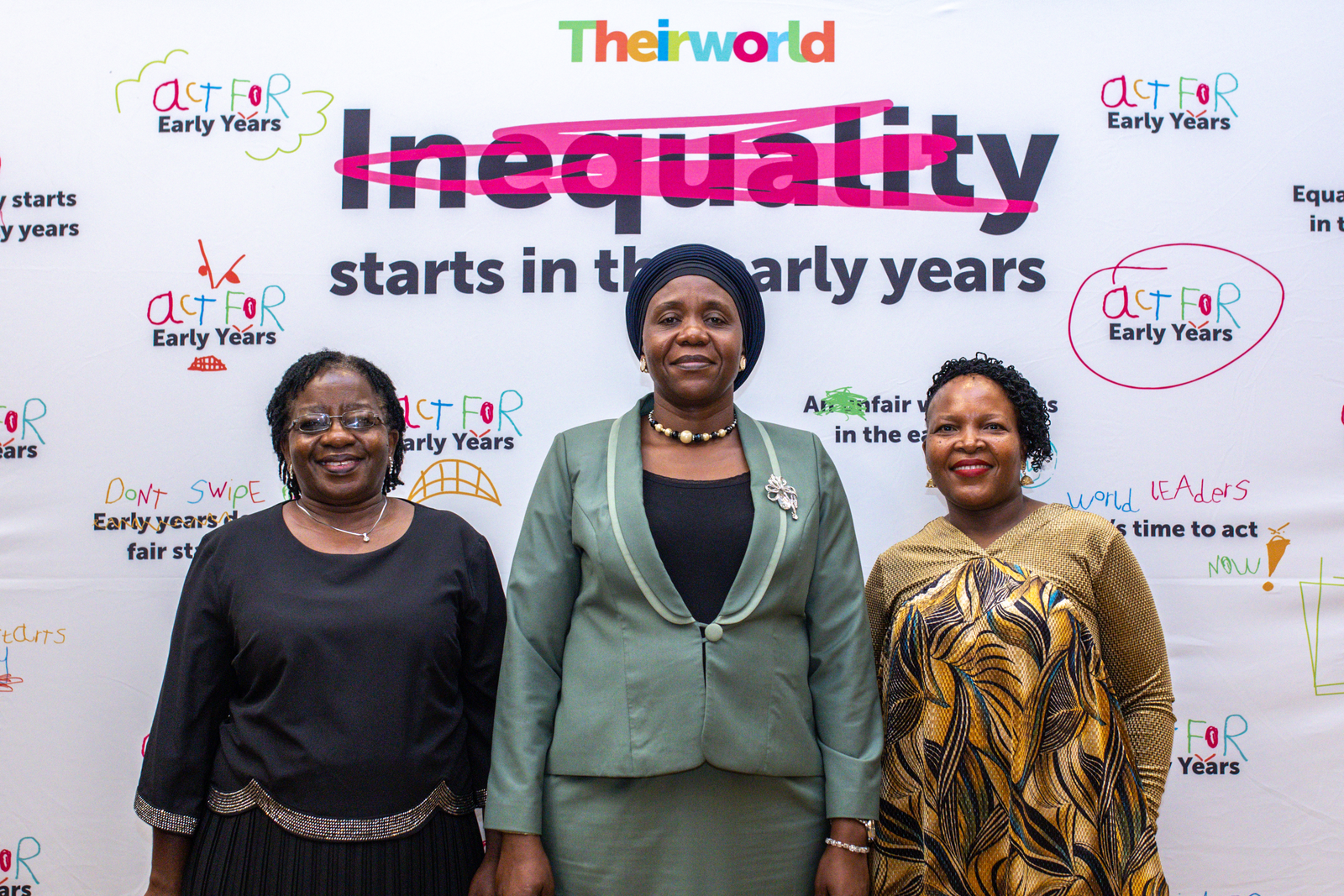
Sarah Brown: my 10 priorities and predictions for 2016
Barriers to education, Campaigns, Early childhood development, Education funding, Girls' education, Global Youth Ambassadors, Health and nutrition, Right to education, Sarah Brown, Sustainable Development Goals, Technology and education, The Global Business Coalition for Education (GBC-Education)
Theirworld President Sarah Brown looks at the year ahead and gives her opinion on what the big moments will be in order to see education and learning goals met.
Each New Year brings fresh challenges for campaigners to articulate their message of change and persuade activists, donors and national governments to act to improve all of our lives.
The results are mixed, but always herald progress in political commitments and funding – but of course never enough! Rising levels of poverty and inequality have upped the ante.
This year we have a clean slate as we attempt to make the United Nations’ new Sustainable Development Goals a reality. The SDGs comprise a complex 17-point plan with 169 associated targets – but really there are two big goals – to protect the planet and to invest in people, putting the furthest behind first.
The state of our planet and its people depends on whether global leaders make and stick to the right, courageous decisions. And it falls to us to use our voices to persuade them. If we fail, we fail together.
In the last year or so, education has come right to the forefront of how we invest in a growing global population so that all children have the chance to unlock their potential and become active citizens.
The statistics are stark. Without new action, it will be 2086 before the last child is in primary school and far into the 22nd century before everyone will go to secondary school. But 2016 can be the year that changes this trajectory for investing in girls and boys.
A World at School brought together a giant coalition of partners and activists, more than 100 NGOs and faith organisations worked together closely throughout the year alongside many thousands of individual campaigners.
Over 10 million people signed #UpForSchool, the world’s largest education petition presented to the United Nations last September. A growing cohort of Global Youth Ambassadors are learning, training and devoting their energies to expanding their campaign this year.
So with momentum on the side of the global education movement, here are my top 10 campaign priorities and predictions for 2016 to see education and learning goals met.
They are in no particular order with the exception of no1 – it is youth voices that will make the greatest difference across all the new emerging channels and platforms on which they can be heard.
1. Youth
Young people face the most uncertain future as we scrabble to catch up on climate change commitments and invest properly in education, training and a brighter future for all our global citizens.
A World at School’s platform has gathered millions of people together who can access campaign information and messages to take to their local communities, national governments and all the way to the UN.
The digital space opens up innovative ways to share messages, join together and raise the volume. Young people are increasingly connected and aware of how each other live – and rising levels of inequality become unacceptable when you are all friends online. More youth will also take to the streets as well as to the clouds to share creative, articulate, sharp messages that no political leaders should ignore.
2. Campaign Integrity
With the greater transparency that digital campaigning provides, it is essential that clear targets are set for campaigns — for funding, for numbers of children signing up to school, for taking down the barriers that stop children attending, for any measure of success.
Activists are smart and can sniff out a phoney campaign designed for fundraising or database building, and will lean to the real this year. If nothing else we can learn from the environmental movement which got its act together in spectacular form in 2015.
Even the generosity of celebrity endorsement needs to be backed up by a genuine interest – it is not enough to send out a few tweets or sing brilliantly at a charity concert – smart celebrities, agents and managers will focus on the integrity of brand building with real actions that make a difference.
3. Convergence (and finding a new name for this)
I feel partly at fault for this in making the call for a convergence between health, nutrition and education. For people who want to live better lives, it all joins up and schooling does not exist without a daily meal and good health, access to water and sanitation and a safe school journey home.
We may have 17 SDG goals but they should all add up to one better life for each person. As soon as we find a better name to describe what has so far been called convergence, the quicker we will find focus and forge stronger partnerships across the development community.
4. Time for business
Much has been talked about the relevance and importance of private sector engagement in delivering quality education for every child. Many types of business have a role to play in contributing to how the most vulnerable children can access learning in a school or via remote access technology.
This is not just about books and training teachers (though both are vital) but also about safe school buildings, school buses, school lunches, early years learning and innovative code clubs, sharing citizenship skills and much more.
GBC-Education members have been working on taskforces for Safe Schools, Digital Platforms, Girls’ Education and Early Childhood Development – new innovations and ideas are coming down the track fast.
This year the World Economic Forum at Davos will host an event for business commitments to Syrian refugee education. More CEOs can use their powerful voices to stand up for vulnerable people together, and workforces can lend their skills and voices to anything from the #UpForSchool campaign to in-kind support providing food, transport, technology and building materials.
Large corporates are partnering with individual NGOs to develop multi-million dollar partnerships – and this will be the theme of the annual GBC-Education partnership meeting in April. More is coming in this area as private and public sectors figure it out together.
5. Courage in Leadership
The greatest moments come when Presidents and Prime Ministers risk their own places at the top tables to do the right thing. This year, progress on climate change and education will be the two areas where we may see big risks pay big dividends for the leaders heading the call for action from millions of people.
From Avaaz’s Climate Marches to protect the planet to #UpForSchool’s call from youth, faith groups and business this year — no one will miss the ask for change. There is definitely space for a new hero(ine) or two in the pantheon of historic global change-makers.
6. Girls Girls Girls
Organisations likes Camfed and Girl Effect have been working for years to make the case for the investment in girls. The yield is like no other – a better life for the girl, for her family, for her community and for the world – win win win win.
The voices of the Girl Rising women, the MAKERS community, Theirworld’s girls’ tech hubs and Global Youth Ambassadors, and anti-child marriage coalition Girls Not Brides have raised the volume.
The case has been made and the voices raised. Donors like Norway, with the Prime Minister and Minister of Foreign Affairs doubling of aid to education, UK’s DfID Girls’ Education Challenge, and the US government’s Let Girls Learn initiative have all prioritised funding programmes for girls.
Feminism is now the stuff of glossy magazines again, and young women can find a myriad of role models via social media. So this year it is time to get results for the most vulnerable and disenfranchised women – the really hard work for the hardest to reach starts now.
7. tech4ed
It is stating the obvious to say that technology will bring change to millions and that it can be harnessed to bring education and learning for those in remote areas or out of school. As quickly as it moves, it is critical to ensure that technology unlocks human potential.
The Global Education Platform project publishes its report in January 2016, and submits it evidence to the new International Commission on Financing Global Education Opportunity to call for investment to unlocking digital learning and narrow the digital divide.
My hunch is that we may see the greatest technology advances in the delivery of education in emergency contexts.
We must not forget that even in the most privileged of societies there are rising levels of poverty and inequality, and ensuring equal access to technology needs extra effort so that we leave no one behind.
2016 will also be an interesting year to see how new technologies and the latest social media trends can be harnessed to bring fresh impetus and a bright face to campaigns.
8. Introducing ECD
We state the obvious when we say that the crucial early years are vital for a child’s chance to learn and flourish. We have the empirical evidence that early childhood development is a worthy investment for any society, but we have been slow to act.
Until now the donor community has been able to focus on maternal and child survival and then jump to the first day at school, but the launch of the SDGs means this need not be the case anymore.
This year we can really roll out the messages to place Early Childhood Development and early years education at the very start of where learning – and education investment – begins.
The Conrad N Hilton Foundation has upped its investment in ECD funding with UNICEF, Theirworld and others. 2016 will be a big year for ECD and there are many experts waiting to give their voices to support the case. Investing in a tiny person is the way to get big dividends from our future citizens. Watch this space.
9. Good Governance
As hard as we all try to encourage investment in international development, the need to see donor, national government and community investments reach their destinations is paramount. Rising inequality and the terrible disparities that are all too apparent will mean impatience against corruption and poor governance.
The terrible inequities that exist can only be broken if there is a fair, transparent and honest way of delivering good education, health and other vital systems for people. Young people realise this and will be the first to call out corruption as they find it.
Anti-poverty and human rights campaigners will join with education campaigners to create even stronger messages and calls for action. The vast networks of young campaigners mean that every country in the world will have its moment of speaking truth to power.
10. The Special Moment
Every year has a special moment when campaign focus can fall effectively and the time comes to go for the big win. Last year for education this was the Oslo Summit in July 2015 – the first time I can recall in my (long) campaigning life that every ask was achieved – EVER!
More news

